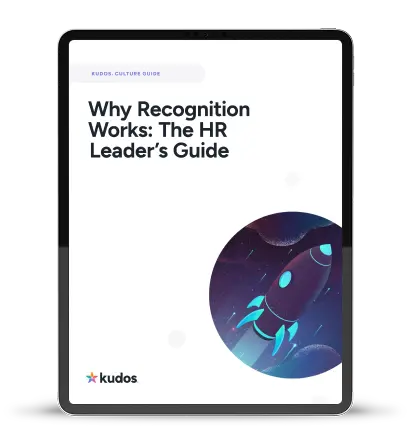Tackling Burnout: How to Build a Resilient Team
Performance
February 4, 2023
Marco Palomino
X min
Performance
February 4, 2023
Marco Palomino
X min

According to the World Health Organization (WHO), burnout is an occupational phenomenon that results in stress not being properly managed. The symptoms of burnout, however, can differ from person to person. Some might experience exhaustion in the workplace; some might develop a negative feeling toward their job. Regardless, burnout isn’t something your employees can just shake off.
Why are your employees’ showing signs of burnout? Identifying the root of the problem is essential for organizations wishing to remedy the issue. Unfortunately, employees often choose silence, or hope that the situation will just resolve itself.
By fostering resiliency, you can create a team that will adapt and recover from tough situations. This is something you can start working on right away, and yes, it begins with the person in front of the mirror – but with some work, it can resonate with the entire organization.
Tim Cook, CEO of Apple
In the last quarter of 2020, Tim Cook spoke in the earnings call for the technological giant. That day, Cook gave his employees’ praises. One word he used to describe his team that year was resilient. Despite several challenges, his team came together and achieved a 6% growth over the previous year, higher than Wall Street’s prediction.
Cook explained that a shared sense of purpose between his employees was what made everything possible. Cook’s empathy is nothing new. However, it was his resilience that trickled down to his employees, inspiring them to keep going. This is key in a post-pandemic world – the modern leader must be resilient and empathetic to inspire those qualities in their teams.
Bob Chapman, Chairman and CEO of Barry-Wehmiller
The Chairman and CEO of the $3-billion corporation Barry-Wehmiller spoke about how he faced the 2008 recession without making any layoffs. He attributes that to resilience. Chapman explained the importance of designing a resilient business model. A model that is designed to take on the shocks of the economy.
In a conversation with thought leader Simon Sinek, Chapman explained the similarities of parenting and leadership. Listen to the entire conversation here.
Chapman built resiliency by creating education programs that his employees can take, where one of the primary skills they are taught is listening. Chapman believes the best way for people to understand each other, is through empathy and listening to one another.
1. By Listening: Bob Chapman learned that the best way for people to understand each other is to be empathetic listeners. Burnout doesn’t develop overnight. This is a state-of-mind that grows over time, and without the right approach, employee’s mindsets can crumble. By listening to what your employees have to say, you’ll be helping your organization build resilience, reducing the chance of burnout.
According to Gallup, employees with managers who listen to their work-related problems are 62% less likely to be burned out. In an ever-changing working environment, listening will help clear any roadblocks your employees encounter. On top of that, employees who feel valued and heard will face difficult situations with more confidence knowing they are supported.
Tip: Create an intentional, positive and safe environment for listening. Being a boss or manager is not the same as being a leader. Focus on your onboarding, your one-on-ones, even exit interviews. Any interaction you have with your employees is an opportunity to learn more about them and their experience in your organization.
2. By Recognizing: Frequent recognition gives your employees motivation to go the extra mile. Recognition recharges resilient teams. According to HubSpot, almost 70% of employees say they would put more effort into their work if their efforts were better recognized. Moreover, recognizing employees for their hard work can foster a sense of belonging in the workplace – which in turn, According to Harvard Business Review (HBR), can bring down absenteeism due to sickness up to 75%.
When you add more positive interaction at work through frequent recognition, your employees feel more confident, get more work done, and really look forward to being at work each day.
Tip: Focus on building a culture and a habit of recognition. When you recognize your employees often, you’ll have more productive teams.
With Kudos’ simple but effective recognition approach, staying on top of your team’s achievements has never been easier. The platform allows you and your team to send a personalized recognition message in seconds. The platform also offers deep analytics that help you measure employee engagement, which is essential for employees at risk of burnout.
3. By Being Proactive: Your chances of fighting burnout are much higher when you take the time to apply tips like these. As a leader, you have the enormous responsibility to modelling resilience and continuously adapting to current employee needs. You would do it for your clients, why not do it for your employees? Becoming a servant leader is something you can learn little by little; but your employees will notice instantly.
Burnout occurs when employees don’t see a light at the end of the tunnel. An empathetic servant leader can help this by listening, and offering clear guidance and direction. By understanding your employees’ experiences during stressful situations, you can direct them better and help them regain their confidence. Additionally, your empathetic approach will boost employee retention and reinforce their working relationships.
Tip: While we think it’s amazing that you’re thinking of a recognition solution, don’t forget to do what’s best for your organization and employees. One way is to align your recognition strategy by incorporating your core values. According to Gallup, only 27% of employees believe in theirs. With Kudos, you align every recognition message to your organization’s unique values. This is key for employees and organizations because it will create a better sense of belonging and alignment.
As a leader, you have the tools to build a resilient team. You can directly impact your team and adapt to new challenges. Don’t wait until your best employees leave from burnout and discouragement – act now to prevent it.

A newsletter with the best resources for HR professionals.


Propel your organization into new realms by building a culture of recognition that enhances morale and boosts performance across all levels.
Get Your Guide